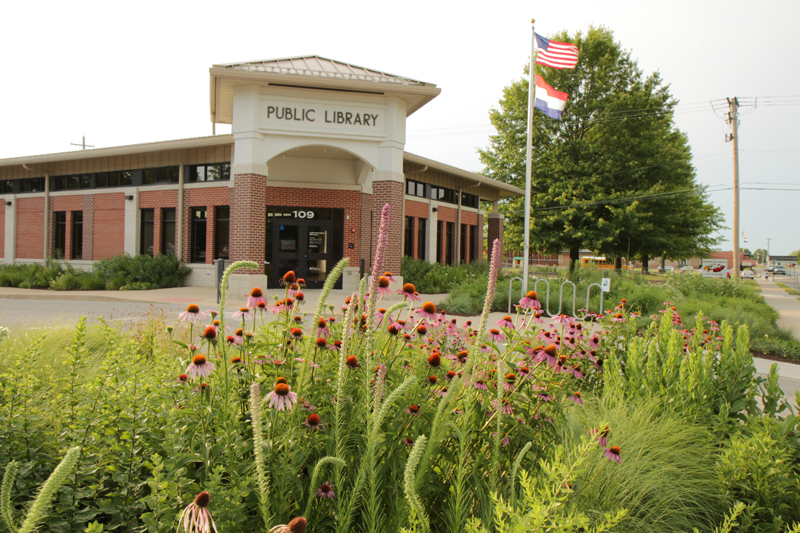Outside of the Southern Boone County Public Library, butterflies flutter in and out of the flowers now in full bloom in the library’s native garden that surrounds the building. The abundance and type of plantings in the garden entitled it to become a registered Monarch Waystation through Monarch Watch, and it recently was registered as a part of the Million Pollinator Garden Challenge.
“People just love this garden. It’s constantly changing as different plants bloom, so people like to explore what’s there when they visit the library,” said Ronda Mitchell, Southern Boone County Public Library manager.

After the building was completed in 2012, a pair of experienced native plant enthusiasts made a gift to the library of landscaping plans, plants and labor so the library could get started on the project. After the initial planting, another local resident, Bill Ruppert, who owns and manages the St. Louis office of National Nursery Products specializing in perennials and native plants, volunteered to further enhance the garden area and suggested additional plants. The Friends of the Southern Boone County Library kicked in funds to purchase more landscape materials.
As of this year, 26 different native plants make up the plantings, including four species of milkweed and some larger woody plants. “It was important to us to make this area an outdoor classroom where people can see how beautiful a native garden is and also to serve as a demonstration of how we can help save our native pollinators like bees and butterflies by providing them with nontoxic food sources,” said Mitchell.
If you find yourself traveling on Highway 63 between Columbia and Jefferson City this summer, take a moment to stop in at Ashland to enjoy the beauty and wonder of this native garden. Follow Broadway until it intersects Main Street, then turn right and the library is on your left.
A Selection of Native Plants You’ll See at the Library
Forbs for monarch butterflies*
- Butterfly milkweed
Asclepias tuberosa - Marsh milkweed
Asclepias incarnata - Purple milkweed
Asclepias purpurascens - Spider milkweed
Asclepias viridis
Other notable native forbs*
- Prairie dock
Silphium terebinthinaceum - Shining blue star
Amsonia illustris
Natives for wet landscapes
- Copper iris
Iris fulva - Rose mallow
Hibiscus lasiocarpos
Nectar plants for butterflies
and native pollinators
- Aromatic aster
Symphyotrichum oblongifolium - Blue wild indigo
Baptisia australis - Eastern blazing star
Liatris scariosa - Foxglove beardtongue
Penstemon digitalis - Golden groundsel
Packera obovata - Heartleaf golden Alexander
Zizia aptera - Ironweed
Vernonia fasciculata - Purple coneflower
Echinacea purpurea - Showy goldenrod
Solidago speciosa - Slender mountain mint
Pycnanthemum tenuifolium - Wild bergamot
Monarda fistulosa
Featured grasses
- Little bluestem
Schizachyrium scoparium - Prairie dropseed
Sporobolus heterolepis - Sideoats grama
Bouteloua curtipendula
Woody shrubs
- American beautyberry
Callicarpa americana - American smoketree
Cotinus obovatus - Aromatic sumac
Rhus aromatica - Wild hydrangea
Hydrangea arborescens
*Forbs are broad-leaved herbaceous plants, distinct from grasses, shrubs, etc.
For related information:
www.grownative.org
